Jet plane shocked West
The Korean conflict continued for nearly six months by the morning of November 30 1950, when the US bomber B-29 Superfortress, which had raided the North Korean air base, was slightly damaged by a fighter that moved too fast and therefore could not identify, and the shooter bomber did not have time to fix it using the guidance system of his machine gun. Lockheed F-80 fighter jets with a rectangular wing, which accompanied the bomber, undertook a symbolic pursuit, however, having accelerated, the unidentified fighter quickly turned into a point, and then disappeared altogether.
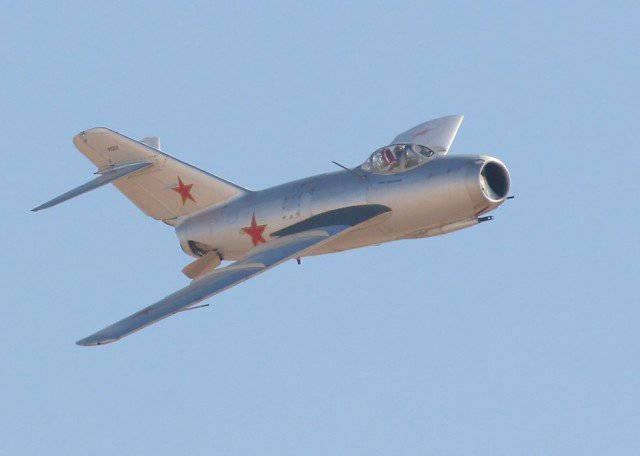
The report of the bomber crew caused an organized panic in the American command chain. Although the description by the pilots of the intruding aircraft did not coincide with any of the samples used in this theater of operations, US intelligence quickly made a reasonable assumption. They said that it was a MiG-15 fighter that had risen, most likely, from an air base in Manchuria. Prior to this incident, analysts believed that Stalin had given permission only to use MiGs to protect Shanghai from the raids of Chinese nationalist bombers. This MiG was a grim omen: China’s involvement in Korea was growing, and Soviet technologies were spreading.
For the crews in the cabins of awkward “Super Fortress”, this plane, which was rapidly cutting through their structures, became a source of suffocating fear. “In my opinion, everyone was scared,” says former B-29 pilot Earl McGill, describing the noticeable lack of radio talks during the flight of his four-engine Boeing aircraft — these were the machines that ended World War II - just before the attack on Namsi airbase (Namsi), located near the border between North Korea and China. “In preparation for the first mission, we were provided with information about the interception that took place. I was so scared that day, more than ever in my life, even when I made combat missions on B-52 aircraft (in Vietnam). ” Earlier in conversations in the room for duty pilots had a lot of black humor. “The guy who instructed on the upcoming route looked like a funeral home,” adds McGill. He conducted this briefing in a special top hat, which the undertakers also wear.
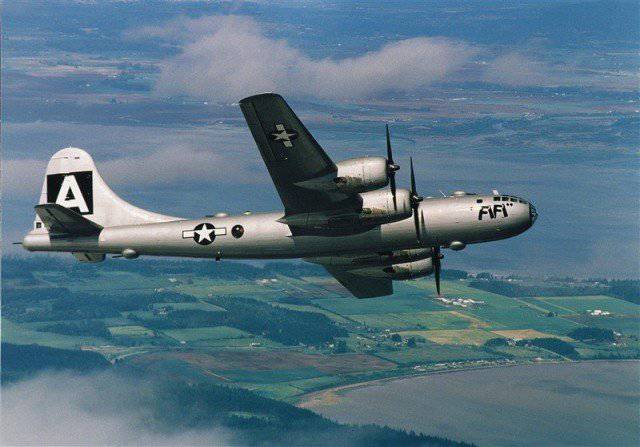
One of the catastrophic days in October 1951 of the year - he was nicknamed "Black Tuesday" - MiGs shot down six of the ten "Super Fortresses". McGill's first meeting with these planes was typically short. “One of the shooters saw him. Only a small silhouette was visible, McGill recalls. “That's when I saw him ...” - the arrows opened fire on him. ” The centralized bomber firing system provided some protection against fighters, McGill stresses.
The pilot of the MiG-15 Porfiry Ovsyannikov was the target at which the arrows of the B-29 bomber were firing. “When they started shooting at us, the smoke came out, and think about it, whether the bomber was set on fire, or the smoke from machine guns?” He recalled in 2007, when historians Oleg Korytov and Konstantin Chirkin interviewed him to create an oral stories combat pilots who participated in the Second World War, as well as in the war in Korea (These interviews are posted on the website lend-lease.airforce.ru/english). Russian historians have asked Ovsyannikov to evaluate the small arms of the B-29 aircraft. His answer: "Very good." However, MiG pilots could open fire from a distance of about 700 meters, and from that distance, as McGill emphasizes, they had the opportunity to attack a group of B-29 bombers.
“Aircraft MiG-15 came as a very big surprise for us,” said Robert van der Linden, curator of the National Air and Space Museum (National Air and Space Museum). If we compare the Saber (Saber) with the North American A-86, which were urgently put into service after the appearance of the MiG-15, we can say that “the MiGs were faster, they had a better climb rate and greater firepower,” he notes. And the pilots who flew the Saber fighters knew this.
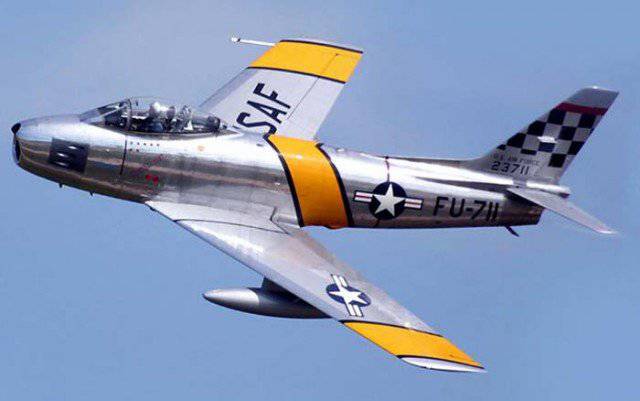
“You are absolutely right, it was humiliating,” says retired Air Force Lieutenant General Charles “Chick” Cleveland (Charles “Chick” Cleveland), recalling his first meeting with the MiG-15 fighter. He piloted the Saber in Korea in the 1952 year as part of the 334 squadron of fighter-interceptors. A few weeks before, the squadron commander, renowned ace of the Second World War, George Davis (George Andrew Davis) was killed in a battle with a Soviet fighter. (Davis was posthumously awarded the Medal of Honor). At that moment, Cleveland, laying a steep turn to get away from the MiG, exceeded the parameters for dumping the Sabre and went into a tailspin for a short time - according to him, it all happened “in the midst of the air battle”. Cleveland, despite the mistake he made, was able to survive and then became an ace of the Korean War, having 5 in his account with confirmed downed MiGs, as well as two unconfirmed. Today he is president of the American Fighter Aces Association, and he still respects his opponent, whom he had to fight 60 years ago. “Oh, it was a wonderful plane,” he said by telephone from his home in Alabama. “It should be remembered that in Korea this small MiG-15 was able to successfully do what all these Focke-Wulfs and “Messerschmites” during the Second World War - he squeezed out the bomber aircraft of the United States of America from the airspace ”. From November 1951, B-29 aircraft remained on the ground during daylight hours, and combat missions took place only at night.
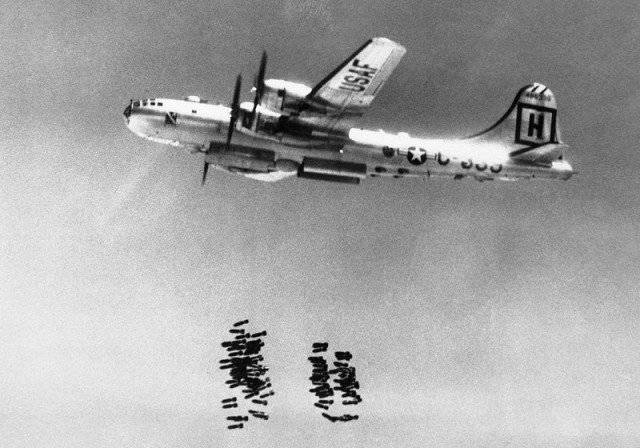
Inevitably, the history of the MiG-15 returns to fights with the Sabers, and this rivalry determined the outcome of the air war in Korea. However, the connection between MiGs and Sabers began during the previous war. Both of them took inspiration from the concept that arose as a result of a desperate search for weapons at the end of World War II, when the Allied air forces gained numerical superiority over the German Air Force. In a desperate situation, the Luftwaffe High Command held a competition. The winner of the “Extraordinary Fighter Competition” was a plane presented by the head of the design office of the company “Fokke-Fulf” Kurt Tank (Kurt Tank) and received the designation TA-183; it was a single-engine jet fighter model with a high T-tail. In 1945, British troops entered the Fokke-Fulf plant on Bad Ailsen and confiscated drawings, models, and data obtained during wind tunnel tests, and they immediately shared this with the Americans. And when Berlin fell, the Soviet troops engaged in the analysis of material in the German Ministry of Aviation and found there a complete set of drawings of the TA-183 aircraft, as well as invaluable data on wing tests. In less than two years and with an interval of only a few weeks, the United States of America and the Soviet Union introduced a single-engine jet aircraft with wings located at an angle of 35 degrees, with a short fuselage and a T-tail. These two aircraft were so similar to each other in Korea that the American pilots, eager to write down some MiG, mistakenly shot down several Saber aircraft.
None of these fighters was a copy of the Tank model. Primitive aerodynamic studies, as well as the limited availability of engines and the materials used at that time inevitably led to the similarity of the models being developed. The first jet aircraft developed by the Moscow-based design bureau of Mikoyan and Gurevich (MiG) was the MiG-9. The primitive MiG-9 engine — a BWM twin engine captured in Germany — was insufficient for the intended characteristics of the MiG-15, but Moscow had practically no experience creating superior samples. Instead, the MiG-15 was originally installed on the Rolls-Royce Nene engine, which was magnificent in terms of its innovativeness and thoughtlessly supplied by the British to the USSR.
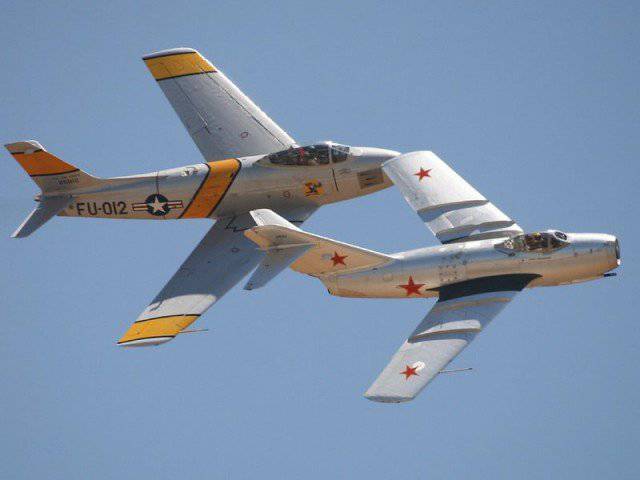
Wanting to bring thaw into Anglo-Soviet relations, British Prime Minister Clement Atley (Clement Attlee) invited Soviet scientists and engineers to the Rolls-Royce plant to study how British engines are excellent in quality. In addition, Atlee offered the USSR licensed production, and this was done in response to the solemn promise to use these engines only for non-military purposes. This proposal struck the Americans, who made loud protests. And what about the Soviets? Born in Ukraine, the Soviet aviation historian Ilya Grinberg (Ilya Grinberg) believes that “Stalin himself could not believe it. He said: “Who, being in his right mind, would sell us such things?" "Greenberg, a professor of technology at the University of New York at Buffalo, stresses that the presence of Artem Mikoyan himself as a member of the delegation from the name MiG "- should have served as a warning regarding the consequences of the proposed transaction: the Rolls-Royce engines delivered in 1946 to the USSR were urgently installed on MiG-15 aircraft and successfully passed flight tests. By that time, when this fighter was ready for mass production, it was possible to solve all engineering problems associated with Rolls-Royce Nene engine technology, and as a result, a copy of it appeared under the designation Klimov RD-45. The British, according to Greenberg, complained about a violation of the license agreement, but "the Russians simply told them: listen, we made some changes, and now this can be considered our own development."
But, as in the case of copying in post-war Soviets cars from Western Europe, engines produced in the USSR were inferior in quality to the originals. The period from the beginning of the use of Klimov's engines to their failure was measured in hours. “Based on the state of the Soviet aircraft industry at the time, it was possible to assume that the quality control of MiG enterprises was lower than the level that existed in the West,” Greenberg said. Materials for parts subjected to high pressure did not meet the standards. Tolerances were insufficient. In fact, some of the problems on the MiG aircraft were related to the wings, which did not fully meet the requirements. Greenberg describes an archival photograph of an engine installation production line for the first generation of MiG-15 fighter jets. “What can I say here? - he notices in indecision. “These are not people in white overalls at high-tech production.”

However, by this time another Soviet design bureau, headed by Andrey Tupolev, had copied to the last rivet two Boeing B-29 airplanes, which had made an emergency landing on Soviet territory during World War II. Greenberg argues that the achieved production accuracy in the framework of the Tupolev project was transferred to work on the MiG program. In fact, “the B-29 copy project pulled along not only the Soviet aviation industry,” he stresses. Although MiGs continued to be inexpensive to manufacture and unnecessarily spartan, the final version of this aircraft, which rose into the air in the 1947 year, turned out to be strong and reliable.
The first wave of pilots of the F-86 fighters from the 4 air regiment included veterans of the Second World War. Obviously, they had to confront inexperienced Chinese pilots at the controls of the MiG-15, prepared by Russian experts. However, it soon became clear that quite recently graduates of flight schools were flying to the North Korean MiGs. The Saber fighter pilots called the mysterious MiG-15 pilots "honchos", which in Japanese meant "bosses." Today we know that in the cabins of most of the North Korean MiGs were hardened pilots of the Soviet air force.
Chick Cleveland describes meeting with MiG pilots whose skills involved not just training in classrooms. Cleveland was approaching the Amnokkan River at an altitude of about 12 000 meters, when a MiG flying at great speed appeared in front of it. The speed of both aircraft was close to the Mach number, when they flew next to each other. "I said to myself: These are no longer teachings, now everything is for real." Using the advantage of "Sabre" in speed and in the turning radius, he used the acceleration and was in the tail of the MiG. "I came very close to him, and it seemed that he was sitting next to me in the living room."
Remembering at this moment about the stories of pilots from the Second World War, who forgot to press the trigger at the height of the air battle, Cleveland looked down for a moment to check the position of the toggle switches on his Saybre. “When I looked up again, this MiG was no longer in front of me.” Cleveland looked ahead and back “and around itself across the horizon” - nothing. There was only one chilling opportunity. "I slightly turned my F-86, and he, of course, was right under me." It was a deft attempt to swap roles, made by the pilot of the MiG, who sharply limited the supply of fuel and, having dropped the speed, was at the bottom, and then behind the enemy sitting on his tail. “I gradually became a fox, and he turned into a dog,” says Cleveland, laughing. However, after several maneuvers, the Sabre regained its position and again found itself on the tail of a Soviet pilot, who was forced to resort to "the classic MiG tactics" - he began to sharply gain altitude. Cleveland fired several bursts on the engine and fuselage of the MiG, after which it slowly shifted to the left, made a dive down and went towards the ground. Given the characteristics of the MiG, a dive at high speed indicated a crash, not an exit strategy.
Due to the fact that MiGs questioned the superiority of the United States in the air, the Americans tried by all means to get Soviet technology at their disposal, but they managed to get the MiG-15 capable of flying only in September 1953 of the year when North Korean pilot defector But Gym Sok (No Kum-Sok) landed his fighter at Kimpo airbase (Kimpo) in South Korea. Flights on the Korean MiG should have clearly demonstrated what machines the American pilots had to deal with. To evaluate the Soviet fighter, the best pilots of the United States Air Force - Captain Harold Collins (Harold "Tom" Collins), from the test division of Field Wright airbase and Major Charles Yeger (Charles "Chuck" Yeagger) were sent to Kadena airbase (Kadena) in Japan. 29 September 1953, the first Western pilot took to the air in a mysterious MiG. This flight confirmed the expected great qualities, but also showed less pleasant characteristics of the MiG-15. “The defector pilot told me that the MiG-15 has a tendency to stall when it accelerates even one G, and also breaks into a corkscrew, which it often cannot get out of,” Collins noted in 1991, giving an interview for a collection of memoirs "Test flights at Old Wright Field". “A white stripe was drawn on the front panel, which was used to center the steering knob when trying to exit a corkscrew. He said that before his eyes his instructor went into a tailspin and then died. ”
Test flights showed that the speed of the MiG-15 did not exceed Mach 0,92. In addition, the aircraft control system was inefficient when diving down and performing sharp maneuvers. During the air battles in Korea, the American pilots watched as the MiG-15 fighters approached their limits, after which they unexpectedly fell at a high speed into a spin and collapsed, often losing wings or tail.
The Soviet pilots also knew the characteristics of the Sabers as American pilots - the capabilities of the MiGs. “You will not force me to attack them at the maximum turning speed,” said Soviet MiG-15 pilot Vladimir Zabelin in one of his oral presentations translated in 2007, “In that case, he could easily be on my tail. When I entered them in the tail, they knew that they could leave me only as a result of horizontal maneuvers ... I usually attacked them from behind and a little lower ... When he started the maneuver, I tried to intercept him. If I didn't knock him down during the first third of the turn, I had to stop the attack and leave. ”
In 1962, the Finnish Air Force purchased the MiG-21 aircraft from the Soviet Union, and also received four MiG-15 training aircraft so that their pilots could familiarize themselves with the exotic characteristics of the MiG cockpit. Retired test pilot Colonel Jyrki Laukkanen concluded that the MiG-15 was a well-controlled and maneuverable aircraft “provided that you knew its limitations and did not go beyond safe piloting. In fact, you needed to keep the speed not higher than 0,9 Mach and not lower than 126 nodes (186 kilometers per hour); otherwise, control began to get lost. ” Landing could be difficult due to manually-inflated pneumatic brakes that quickly lost their effectiveness. “If they warmed up, then you had no other options for control or braking, except to turn off the engine and observe where you ended up — usually everything ended up on the grass.”
Laukkanen believes that there were certain oddities in the cockpit of the MiG-15. "The artificial horizon of the MiG-15 was unusual." The upper part of this device, representing the sky, was brown, while the lower part indicated, as a rule, the earth and was blue. This device was made in such a way that when lifting the symbol of the aircraft dropped down. “It worked as if it were assembled upside down,” Laukkanen wonders. “But that was not the case.” The fuel gauge on the MiG-15 also, in his opinion, was “particularly unreliable,” so the Finnish pilots learned how to determine the amount of fuel using a clock. Being the main test pilot, Laukkanen flew more than 1 200 hours on a delta-winged MiG-21 aircraft. (He was also the only Finn to fly alone on the P-51 Mustang.) “In my opinion, the MiG-15 had no special mysticism,” he says. - My favorite aircraft, which I unfortunately could not fly, was the F-86 Saber.
A more objective indicator of the relative strength of MiG and Saber fighters is the number of enemy aircraft shot down, but this kind of loss ratio is difficult to obtain. So, for example, at the end of the Korean War, Chick Cleveland had in his account four downed MiGs, two supposedly downed and four damaged MiGs. “And when was the last time he saw the MiG in a deadly high-speed dive down?” My follower and I pursued him during a speed descent and an attempt to hide in the clouds at an altitude of about 700 meters. I was sure that he could not do it. But we did not see the ejection or collision of an airplane with the ground, and therefore it was counted as supposed. ” After a thorough research done by another Saber pilot after half a century, his “probable” MiG was eventually replaced by a confirmed shot down by the Air Force’s Correction of Military Records Commission. In the 2008 year, he was lately called an ace.
The Soviet method of confirming the results, according to Porfiry Ovsyannikov, was not particularly accurate. “We made attacks, returned home, landed, and I gave a report,” he said. - We participated in a dogfight! I attacked B-29. And it's all. In addition, the enemy spoke openly about this and reported the data on the radio: “In such and such a place, our bombers were attacked by MiG fighters. As a result, one of our aircraft fell into the sea. The second one was damaged and crashed while landing on Okinawa. ” Then there was a film from a camera mounted on a gun, and we studied it. It showed that I opened fire from close range. As for the other pilots, some did it and some did not. They believed me, that's all. ”
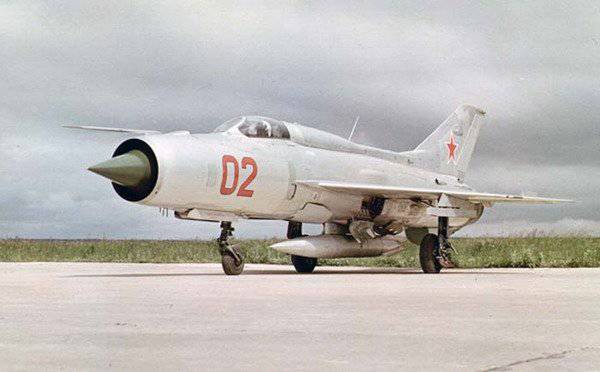
Immediately after the war, the data on the superiority of the Sabre were greatly exaggerated. 792 downed MIGs were reported, while the United States Air Force acknowledged the loss of only 58 Sabre. The Soviets, for their part, recognized the loss of about 350 MiGs, but they claimed that they had shot down an incredibly large number of F-86-640 aircraft, which made up the majority of this type of fighter in Korea. “I can only say that Russians are terrible liars,” said the Saber pilot Cleveland. “At least in this case.”
In 1970, the United States Air Force conducted a study codenamed "Saber Measures Charlie", and the number of casualties in the air battles involving the MiGs was increased to 92 - as a result, the loss ratio of the F-86 was seven to one. After the collapse of the USSR, archives of the Soviet air force became accessible to scientists, and as a result, the loss of Soviet MiG fighters in Korea was set at the level of 315 machines.
If we restrict statistics to a certain period, we can draw important conclusions. Retired Air Force Colonel Doug Dildy notes that when piloting the MiG-15 with Chinese, Korean and newly arrived Soviet pilots, statistics actually indicate a loss ratio of nine to one in favor of the Sabre. But if we take the statistics of the 1951 fights of the year, when the Americans were opposed by Soviet pilots who fought against the Luftwaffe during the Great Patriotic War, the loss ratio is almost completely equalized - 1,4 to 1, that is, only slightly in favor of the Sabre.
Data on the Korean air war show support for this interpretation. When the honchos returned to the Soviet Union, the less experienced Soviet pilots who arrived to replace them could no longer compete on an equal footing with the F-86 pilots. The Chinese lost a quarter of the aircraft from the first generation of MiGs in aerial combat with an upgraded version of Sabre, which caused Mao Zedong to suspend MiG flights for a month. The Chinese received modernized MiG-15bis fighters in the summer of 1953, but at that time it was already planned to sign a cease-fire agreement. MiG-15 aircraft were soon replaced by MiG-17, in which the necessary improvements were made - mainly due to the cloning of technologies from two captured F-86 Saber fighter jets.
By the spring of 1953, Soviet pilots remaining in Korea began to avoid collisions with American aircraft. Stalin died at that time, a truce in Panmunjom seemed inevitable, and no one wanted to be the last victim of the war. Ilya Greenberg summarizes the opinions of people who visited the cockpit of this good fighter: “The Soviet pilots at the helm of Mig-15 viewed air battles in Korea simply as work that had to be done. Ultimately, they did not defend their homeland there. They considered Americans as opponents, but not enemies. ”
While the outstanding aircraft of the Mikoyan-Gurevich design bureau was making a name for itself in the West, Soviet citizens had almost no idea what this name meant. The F-86 "Saber" became the symbol of American air superiority in the pop culture of 1950-s - it was included in the film scripts, got on the covers of magazines, as well as stencils of metal boxes for school lunches. However, in those years, the MiG-15 fighter remained a mystery to the Soviet public. “We didn’t even understand what the name meant, and we learned this much later than you think,” notes Greenberg. “You can see the image of the MiG-15 in any Russian aviation magazine, but the signature will always be like this: a modern jet fighter”.
In the middle of the 1960-s, a policy change that was inexplicable and typical of the Soviet bureaucracy took place, and this fighter, deprived of secrecy, found itself in public parks. “I remember very well when the MiG-15 was set up in our district park,” says Greenberg. The plane was not put on a pedestal and was not part of a monument, as is often done now, but it was simply driven into the park and brake pads were placed under the wheels. “I remember very well how excited I was when I saw this MiG for the first time. We children climbed on him, admired his cabin and all its instruments. ”
And a decade earlier, among the pilots of the air forces of the Warsaw Pact countries, as well as some countries in Africa and the Middle East, information about the success of the MiG-15 in Korea gradually began to spread. Ultimately, this fighter was used by the air forces of 35 countries.
- Stephen Joyner (Stephen Joiner)
- http://www.airspacemag.com/military-aviation/The-Jet-that-Shocked-the-West-232396531.html?c=y&story=fullstory
Information